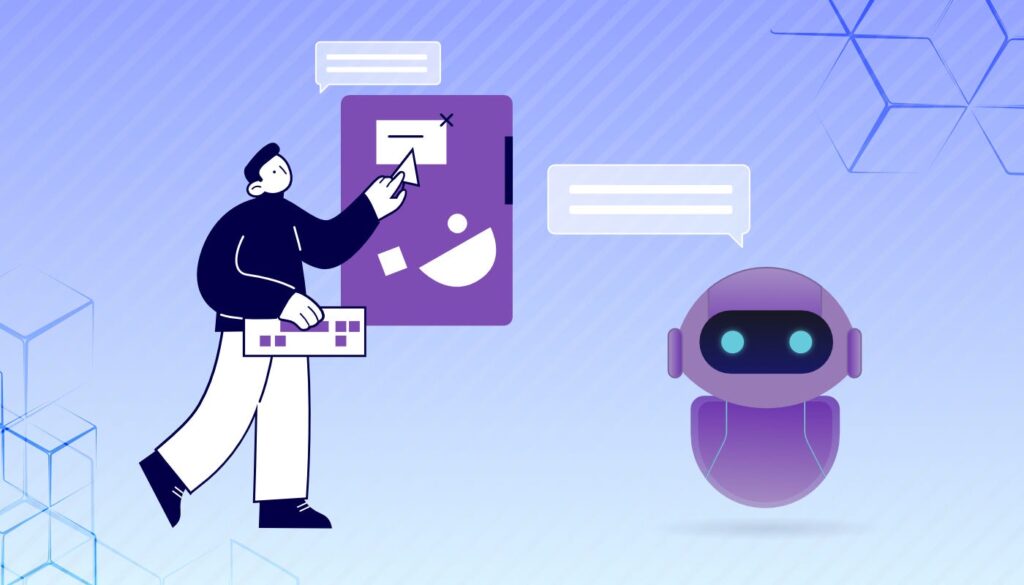By 2026, 50% of B2B buyers will interact with a digital human in a buying cycle (Source: Gartner)
Not just that, even Drift’s latest State of Conversational Marketing report concluded that the stars are aligned for chatbots to take over the consumer support ecosystem.
The survey revealed chatbots are seeing faster growth than any other brand communication channel, with usage increasing by 92% between 2019 and 2020.
So what’s so special about chatbots that they’re a pick-me-up for all businesses now?
Chatbots are AI-powered programs designed to simulate human conversation and interact with users in real-time. They can be deployed through various platforms, including websites, messaging apps, and social media channels.
In the realm of customer service, chatbots have proven to be invaluable assets.
They provide round-the-clock support, answer frequently asked questions, guide users through processes, and even handle simple transactions.
By automating routine interactions, chatbots reduce customer wait times, improve response accuracy, and free up human agents to focus on more complex tasks.
Additionally, chatbots can gather data and analyze user interactions, enabling businesses to gain insights into customer preferences, identify trends, and optimize their offerings.
In recent years, certain trends have been emerging vis-à-vis the introduction of chatbots in customer support efforts. They are:
1. A new segment of higher-value chatbot “Power Users” has come up:

About 80% of users will use a chatbot when it’s offered to them (Source: Solvvy)
In 2021, a survey by Solvvy identified two distinct cohorts of chatbot users: “Standard Users” and “Power Users.”
Standard Users engaged with chatbots few times a month. Although this group is beginning to “test the waters” with increasingly complex chatbot scenarios, they mostly utilize chatbots for straightforward inquiries or problem-solving.
In contrast, Power Users consciously look for chatbots. They interact with chatbots on a weekly or even daily basis, and they are more likely to do so for complex or highly specialized problems like managing subscriptions, checking account balances, or starting new orders or payments.
1/3rd of respondents are presently Power Users, and as chatbot technology develops, it is predicted that more and more Standard Users will convert into Power Users.
2. All consumers increasingly expect personalized chatbot support.

55% of people admit they would prefer to use a chatbot immediately instead of waiting for a live agent (Source: Solvvy)
Thus, as technology advances, Standard Users are becoming Power Users. Companies need to take notice and update their chatbot technology or risk being left behind.
Customers are more likely to become irritated by constraints they experience with basic chatbots elsewhere as they begin to use increasingly sophisticated chatbots. Consider Power Users, who are far more likely to have dealt with fixing individualized problems.
According to 65% of Power Users, they are more likely to leave a business due to a negative experience with a chatbot. This emphasises how crucial it is for businesses to raise the bar for what their chatbots can provide.
Power Users’ business may be retained if sophisticated support features like conversational answers and personalization are implemented.
So far, things are on the right track:
Nearly half (47%) of chatbot users think it’s possible they have mistaken a chatbot for a live customer support agent, and another 11% are not sure, a sign that chatbot technology is advancing rapidly.
3. Support teams should treat chatbots like an extension of the team.

After a live agent chat and a phone call, chatbots are the third most common way to get customer care help. In other words, employees can relax knowing that chatbots will not endanger real agents.
Instead, chatbots should be a part of a comprehensive customer service strategy since they assist and complement human employees.
Additionally, while human operators are seen as the most useful support choices, chatbots are also seen favourably by more than two thirds (69%) of respondents.
Businesses have to take advantage of this rapidly expanding market as chatbot usage increases among customers and technology advances.
NEWS FLASH: Online fashion retailer Myntra recently integrated MyFashionGPT to assist customers in searching products and trying styles.
“We are arguably the first fashion, beauty and lifestyle platform, globally, to roll out this feature to the entire customer base at this scale,” said Raghu Krishnananda, chief product and technology officer at Myntra.
MyFashion GPT enables Myntra shoppers to search for a specific fashion product by typing text in a manner resembling natural speech. Customers will be shown up to six ensemble options, including products across multiple categories like dresses, footwear, accessories, or makeup.
If asked “what can I wear for a wedding in Jaipur?”, the feature will show results that include sarees, salwars, lipsticks, and footwear from Myntra’s collection of more than 2.1 million styles.
Some of these queries include; ‘I want to go to Goa in May, what should I wear? And I like blue’, ‘what should I wear to a Leh bike trip?’
Thus, the inserted chatbot has been enhancing and assisting shopper experience at Myntra with added zest and convenience.
As innovations in chatbot technology continue to leap forward and consumer usage surges, there’s no question intelligent chatbots are reshaping consumer expectations and the future of customer support.

